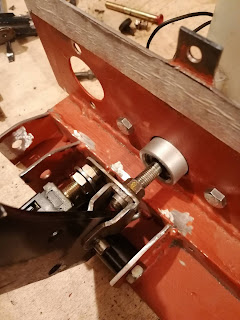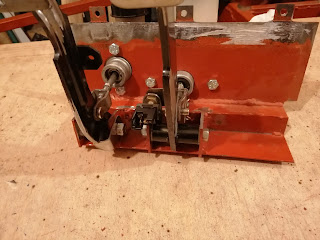Putting everything together for the brake flexi hoses made me remember something I'd decided on a while back. To get the rear suspension behaving itself I worked out that the uprights should be 'backwards'. IE the left will be on the right and vice versa.
This had the positive outcome that the suspension bracket could be correctly fitted, but had the negative outcome that the calipers were on the rear. When I was doing the suspension I thought it would be a minor inconvenience compared to the much bigger problem of redesigning the suspension.
The 'minor inconvenience' might be a bit more of an issue though. I also have the added complexity of wanting a dash mounted handbrake (see the post from last week). This means that custom cables were guaranteed but I'm really not sure whether this sort of safety device is easily DIYable. A quick post on Locostbuilders suggests it's not that much of an issue for two reasons. One was that many people have redone the Sierra handbrake in order to get it to fit. The other is that I can use more of the standard handbrake than I thought I could.
So this weekend I've spent a couple of hours freeing up the adjusting mechanisms on the cables. They took ALOT of work considering it's basically two nuts on a threaded tube!
The next job will be to put the suspension together (again!) and try and route the cable safely. The cable has got to come out the caliper towards the back of the car, then do a u turn on to the chassis (probably close to the brake pipes if I can get it to work). They then need to head up the centre of the car to reach the balance bar (oh yeah, I need to find out where that ended up!!), then onwards to whatever mechanism I'm using for the handbrake itself.
I'm going to try and keep the rear cables as standard as possible, but the front one I think will have to be modified. After all, it's not even going to a handbrake!
I'll get the rear rebuilt and take some photos so I can work it out... but that's it for this weekend.



